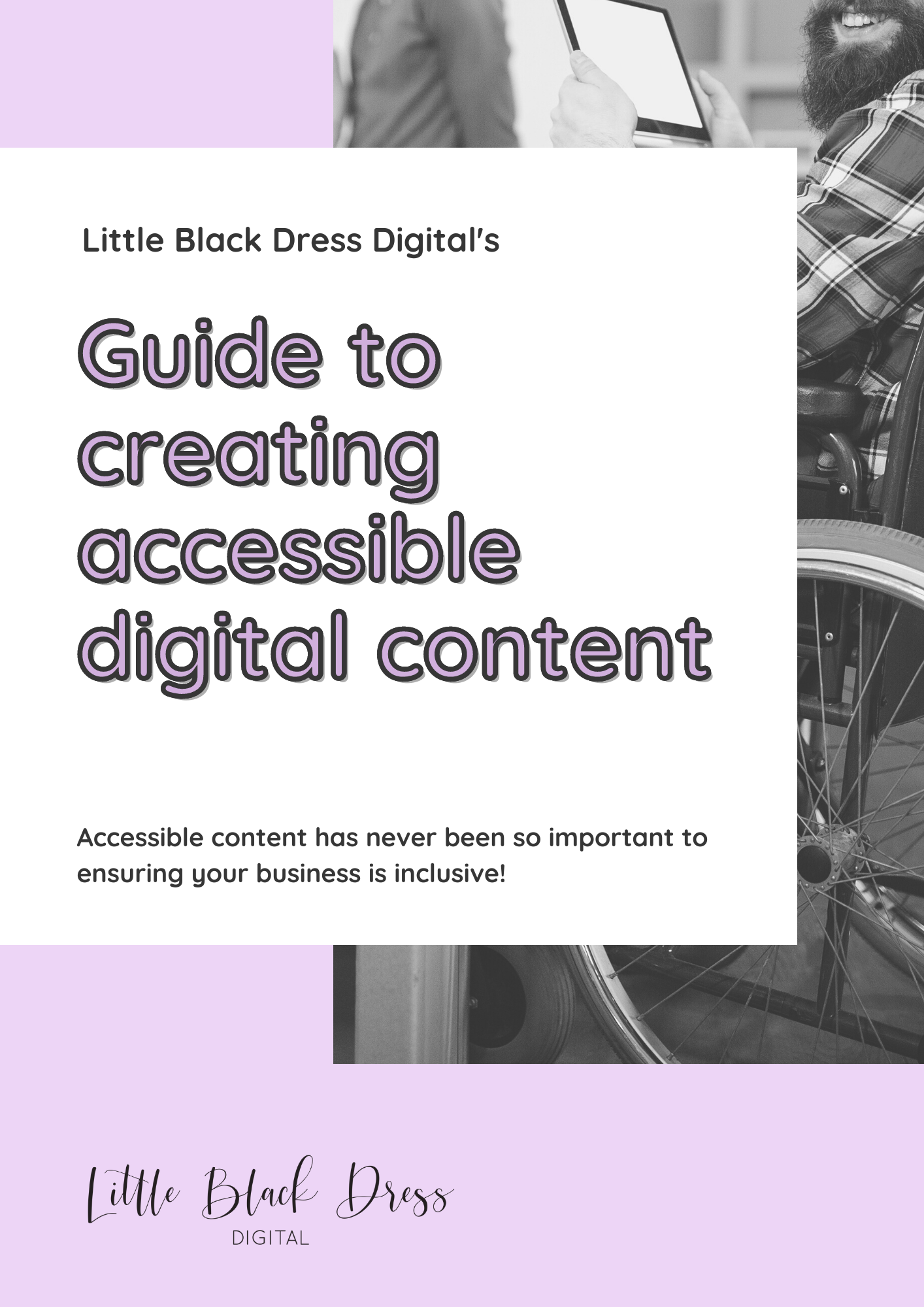We’re sure you’ve heard recent news of Woolworths, Big W and Aldi announcing that they will no longer be selling Australia Day merchandise. This has led to numerous discussions on how brands should be positioning themselves when it comes to sensitive topics. As most news is communicated via social media these days, what to post on your business’s platform when it comes to sensitive topics is becoming a huge question among business owners. Some other recent sensitive topics include International Day of Persons with Disability, the war on Gaza, and LGBTQIA+ representation. These topics being in a broad and saturated online space creates confusion for business owners about how they want to exist in this space. Should we share content supporting our personal beliefs? Or follow what appears to be the majority beliefs? Maybe we shouldn’t acknowledge these topics at all, to avoid potential online disagreements?
Today we’re exploring some ways you can handle sensitive topics on your social media. Of course, our suggestions are not the only way you can approach them, it all depends on your business persona and personal choice.
We hope these recommendations can provide some help if you’re in this situation.
First, Think About Why You’re Posting?
This is probably the simplest way to determine how you handle these topics online. Ask yourself:
- Are you taking advantage of the topic in any way?
- Are you only sharing it for commercial purposes?
- Do you genuinely care about the message behind the topic?
This may be challenging at first. However, it’s important to be clear and honest with yourself on what your personal views on this topic are to determine the type of content you’d like to share. Although, for sensitive topics it’s important to remember that your personal opinions don’t always have to be communicated on your business’ platform. While your audience surely wants to feel a connection with the face(s) behind a brand, delving too deep into your own political views when they don’t necessarily relate to your niche may risk creating division in your online community.
For example, if your business sells hand sewn second hand clothing, you might not share content that isolates a group of people regarding a political topic that has nothing to do with what you’re selling. However, you may be more inclined to share posts about ways to decrease climate change because your niche aligns with your personal views of taking care of the environment.
It’s important to keep your audience at the forefront of your social media content for sensitive topics, just as you would when creating content strategies for everything else.
Make Your Content Strategies Authentic
However, don’t get these strategies mixed up with your financial goals. If you are only posting to draw attention to your own products and services, this can come across as inauthentic and selfish.
Think of the difference in advertising for LGBTQIA+ Pride Month, which occurs in June, versus Disability Pride Month, which occurs in July. Generally, we see a lot more representation for LGBTQIA+ Pride Month – even when you type in “Pride Month” to Google, it comes up with LGBTQIA+ Pride Month results first.
However, this marketing is often ingenuine, and ignores the overarching point of the month, which is to celebrate queer identities and acknowledge the 1969 Stonewall riots that were officially recognized in 1999 by President Bill Clinton, and other queer history. Instead, what is referred to as “rainbow washing” happens. This is where big brands change their logo colours to the colours on the LGBTQIA+ flag, they roll out pride merch, and try to show off their queer credentials. This is all in the hope that they will attract queer individuals and allies to buy and support their products/services. Rarely do they share valuable information on how to support the LGBTQIA+ community, and they push the focus onto themselves instead of queer individuals and queer-run businesses.
After bright rainbow feeds turn back to neutrals and original brand colours on July 1st, we see almost no posts for Disability Pride Month from large corporations to follow up. This is the other end of the spectrum. Social media marketing strategies largely rely on visuals, and many brands find it easier to throw a rainbow into their regular content than a wheelchair (or other symbol recognised in the disability community). This is because in this type of marketing, some brands don’t make the effort to change their ordinary content to truly acknowledge these dates, but post them just to receive positive recognition for themselves. They will choose the simplest way to “acknowledge” them, often without sharing further information supporting the causes.
What are Your Audiences’ Beliefs?
Knowing your audience – beyond just their demographics – is very important when it comes to sensitive topics.
Think about:
- How they might react to certain posts you share.
- Their possible political stances.
- Are they a part of a minority group who might be at harm?
- How their general demographics may impact their political beliefs (age, religion/spirituality, geographics).
Of course, many of these are purely assumptions, as there’s no way to really know our followers’ political positions unless we asked each of them individually (which is unrealistic). But thinking about this can help you decide what type of input you want to put out there regarding certain saturated topics.
Think of your social media profiles like they’re a physical shop. What would you do to make your customers and clients feel welcome in your shop? Maybe your customer wouldn’t go into a store expecting to have deep political discussions, but would appreciate the knowledge that themselves and their loved ones are welcome and accepted there. For example, some shops have an ACON LGBTQIA+ Welcome Here Project sign out the front, which is a simple way of saying they support and welcome queer identities, without getting too into political subtopics which may harm or offend certain people. In what ways can you communicate this in your digital shop?

Going back to the last point, this kind of representation isn’t done for commercial purposes, because it stays up all the time (not just during Pride Month) and is a simple friendly reminder, with a more genuine purpose. It doesn’t draw the same level of attention as brands turning their entire feed rainbow in June, and is likely noticed by a smaller percentage of people.
Know The Context of The Topic
Do you know enough about the topic to form a balanced opinion? More importantly, do you know enough about the topic to be posting about it in a wide online space, where everyone will have access to it?
Often, sensitive topics involve minority groups. These groups ultimately have the most knowledge to build informed opinions. It’s important that in your posts you’re not speaking over these voices, but amplifying them.
So, this doesn’t mean that just because you’re not in the position to develop detailed views on these topics, you avoid posting them all together. Researching and understanding other people’s views and experiences is vital in knowing what you’ll post.
Choose Your Angle
The final step is to choose how you’d like to present your content. If you’ve already done the steps above sufficiently, this should fall into place naturally.
Think about:
- All the different views on the topic.
- The essence of the topic.
- Your answers to all of the other things mentioned above.
We will use January 26th as an example. For many years in Australia, this date has been debated, and several viewpoints still exist regarding subtopics, such as which date it should fall on, its name and what should be acknowledged on the day.
Generally, the essence of the day includes:
- Australian pride.
- Multiculturalism.
- Recognising First Nation Australians’ heritage and culture.
- Grieving the dark history behind Australia’s colonisation.
- Community and families and friends getting together for a BBQ and to enjoy the sunny summer weather.
What people choose to acknowledge in this tradition differs, so think about which is most relevant to your business and audience when selecting your angle.
Overall, the most important part of sharing content about sensitive topics on social media is to be honest without being too personal, and keeping the wellbeing of others in mind. This not only comes down to your audiences’ personal beliefs and experiences, but thinking about how your content will exist in the online space without offending or isolating certain groups of people. While it’s impossible to be certain on how everyone will react to your posts, keeping these points in mind and having genuine motivations behind what you share are steps you can take towards creating an inclusive online community.


